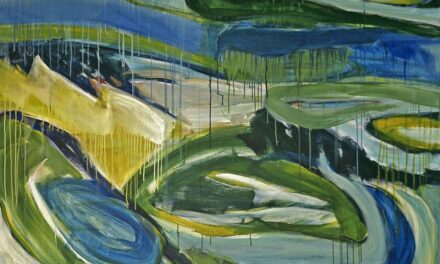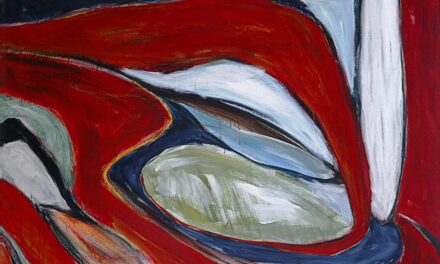Claude Monet (1840-1926) was a French painter who pioneered the Impressionist movement in the late 19th century. His ground-breaking techniques and unique visual language revolutionized the art world, paving the way for modern artistic expression. As one of the most celebrated artists of all time, Monet’s legacy endures, inspiring generations of painters and art enthusiasts alike.
Early Life and Artistic Beginnings
Born in Paris in 1840, Monet spent his formative years in the coastal town of Le Havre, where he developed an early fascination with the interplay of light and colour on the landscapes and seascapes around him. His father, a successful grocer, initially discouraged his artistic pursuits, but Monet’s talent and determination eventually won over his family. In 1857, he enrolled at the Académie Suisse, where he received formal training in traditional painting techniques.
However, Monet quickly grew disillusioned with the rigid academic style and sought a more naturalistic approach to capturing the fleeting moments and atmospheric effects he observed in the world around him. Influenced by the Realist painters of the Barbizon School and the works of artists like Eugène Boudin, Monet began to experiment with painting en plein air (outdoors), a practice that would become a hallmark of the Impressionist movement.
The Birth of Impressionism
In the 1860s, Monet befriended a group of like-minded artists, including Pierre-Auguste Renoir, Alfred Sisley, and Frédéric Bazille, who shared his dissatisfaction with the conventional artistic establishment. Together, they sought to capture the transient effects of light and atmosphere, emphasizing the subjective experience of the viewer rather than adhering to traditional academic conventions.
The term “Impressionism” was coined in 1874 after the art critic Louis Leroy mockingly described Monet’s painting “Impression, Soleil Levant” (Impression, Sunrise) as an unfinished “impression.” Rather than taking offense, the artists embraced the term, which perfectly encapsulated their approach to capturing the fleeting impressions of the natural world.
Artistic Techniques and Visual Language
Monet’s artistic techniques and visual language were revolutionary for his time. He employed loose, broken brushstrokes, vibrant colours, and bold compositions to capture the ephemeral effects of light and atmosphere. Rather than meticulously blending colours on the canvas, Monet relied on the viewer’s eye to optically blend the colours from a distance, creating a vibrant, shimmering effect.
One of Monet’s signature techniques was the use of complementary colours, which he applied in bold, unmixed strokes to create a sense of luminosity and depth. For instance, in his famous “Water Lilies” series, he juxtaposed shades of purple and yellow to evoke the shimmering reflections on the water’s surface.
Monet was also a master of capturing the fleeting moments of nature, often painting the same scene at different times of day or in various weather conditions to capture the ever-changing effects of light and atmosphere. His series paintings, such as the “Haystacks” and “Rouen Cathedral” series, exemplify this approach, offering a kaleidoscopic exploration of a single subject through subtle variations in colour and light.
Major Works and Their Significance
Throughout his prolific career, Monet produced a vast body of work that left an indelible mark on the art world. Some of his most notable paintings include:
“Impression, Soleil Levant” (1872)
This iconic painting, which gave the Impressionist movement its name, depicts the port of Le Havre shrouded in the hazy morning light. With its loose brushstrokes and vibrant colours, the painting captures the fleeting impression of a sunrise, challenging the traditional notions of precise representation and ushering in a new era of modern art.
“The Water Lily Pond” (1919)
Part of Monet’s celebrated “Water Lilies” series, this monumental painting measures over 6 feet by 20 feet and immerses the viewer in a dream-like world of shimmering reflections and abstract forms. Monet painted this series in his later years, inspired by the water lily pond in his garden at Giverny, where he sought to capture the essence of nature rather than its literal representation.
“Haystacks” series (1890-1891)
This series of 25 paintings depicts the same stack of harvested wheat from different perspectives and under varying atmospheric conditions. Monet’s exploration of the subtle shifts in light and colour as the day progressed revolutionized the way artists approached the depiction of nature and paved the way for a more subjective and experiential approach to art.
“Rouen Cathedral” series (1892-1894)
In this series of over 30 paintings, Monet captured the façade of the Rouen Cathedral at different times of day and in various weather conditions. His masterful portrayal of the changing effects of light and atmosphere on the cathedral’s architecture showcased his exceptional talent for capturing the ephemeral qualities of the natural world.
Influence on the Impressionist Movement
Monet’s contributions to the Impressionist movement were profound and far-reaching. His innovative techniques and visual language challenged the traditional conventions of academic art and paved the way for a new era of artistic expression.
Through his emphasis on capturing the fleeting impressions of nature and the subjective experience of the viewer, Monet and his fellow Impressionists ushered in a revolution in art that valued spontaneity, emotion, and the celebration of modern life. Their rejection of rigid rules and embrace of individual expression resonated with audiences and inspired a new generation of artists to break free from the constraints of the past.
Monet’s influence extended beyond the Impressionist movement, as his exploration of colour, light, and atmosphere inspired subsequent artistic movements, such as Post-Impressionism and Fauvism. His innovative techniques and commitment to capturing the essence of nature continue to inspire artists and art enthusiasts alike, cementing his legacy as one of the most influential and celebrated painters of all time.
In conclusion, Claude Monet was a visionary artist whose groundbreaking techniques and unique visual language forever changed the course of art history. Through his mastery of capturing the fleeting impressions of nature and his unwavering commitment to artistic expression, Monet not only pioneered the Impressionist movement but also paved the way for a new era of modern art that celebrated subjectivity, emotion, and the celebration of life’s ephemeral moments.
FAQs
Who was Claude Monet?
Claude Monet was a French painter and a leading figure in the Impressionist art movement. He is best known for his landscapes and outdoor scenes, particularly those featuring water lilies and gardens.
When did Claude Monet live?
Claude Monet was born on November 14, 1840, and lived until December 5, 1926. He was active during the late 19th and early 20th centuries.
What is Impressionism?
Impressionism was an art movement that originated in France in the 1860s. It is characterized by small, thin brushstrokes, an emphasis on light and its changing qualities, and an emphasis on capturing the momentary effect of a scene.
What are some of Claude Monet’s most famous works?
Some of Claude Monet’s most famous works include “Impression, Sunrise,” “Water Lilies,” “Rouen Cathedral Series,” and “Haystacks Series.”
Where can I see Claude Monet’s paintings?
Claude Monet’s paintings can be found in museums and galleries around the world, including the Musée d’Orsay in Paris, the Metropolitan Museum of Art in New York, and the National Gallery in London.



